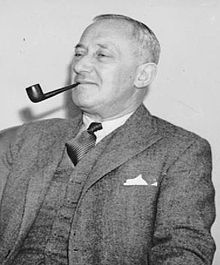Manny Shinwell, Baron Shinwell
|
The Right Honourable The Lord Shinwell CH PC |
|
|---|---|
 |
|
| Minister for Defence | |
|
In office 28 February 1950 – 26 October 1951 |
|
| Prime Minister | Clement Attlee |
| Preceded by | A. V. Alexander |
| Succeeded by | Winston Churchill |
| Secretary of State for War | |
|
In office 7 October 1947 – 28 February 1950 |
|
| Prime Minister | Clement Attlee |
| Preceded by | Frederick Bellenger |
| Succeeded by | John Strachey |
| Minister of Fuel and Power | |
|
In office 3 August 1945 – 7 October 1947 |
|
| Prime Minister | Clement Attlee |
| Preceded by | Gwilym Lloyd George |
| Succeeded by | Hugh Gaitskell |
| Secretary for Mines | |
|
In office 5 June 1930 – 3 September 1931 |
|
| Prime Minister | Ramsay MacDonald |
| Preceded by | Ben Turner |
| Succeeded by | Isaac Foot |
|
In office 23 January 1924 – 11 November 1924 |
|
| Prime Minister | Ramsay MacDonald |
| Preceded by | George Lane-Fox |
| Succeeded by | George Lane-Fox |
| Financial Secretary to the War Office | |
|
In office 11 June 1929 – 5 June 1930 |
|
| Prime Minister | Ramsay MacDonald |
| Preceded by | Duff Cooper |
| Succeeded by | William Sanders |
| Personal details | |
| Born |
Emanuel Shinwell 18 October 1884 Spitalfields, London, England, UK |
| Died | 8 May 1986 (aged 101) |
| Nationality | United Kingdom |
| Political party | Labour |
Emanuel Shinwell, Baron Shinwell, CH, PC (18 October 1884 – 8 May 1986), known informally as Manny Shinwell, was a British trade union official, Labour politician and one of the leading figures of Red Clydeside. He is best remembered as the government minister in charge of Britain's coal supply during the extremely harsh winter of January to March 1947. Coal had just been nationalized and the supply system collapsed, leaving Britain to freeze and close down. Shinwell denied there were problems and refused to assume responsibility, blaming the climate, the railway system, or capitalism generally. The cabinet had to take control away from him and he became the scapegoat.
Shinwell was born in Spitalfields, London, but his family moved to Glasgow, Scotland. His father was a Polish Jew who had a small clothing shop and his mother, a Dutch Jew, was a cook from London. He educated himself in a public library and at the Kelvingrove Art Gallery. He enjoyed sport, particularly boxing, and he was the trainer of a local football team. He began his working life as a machinist in a clothing workshop. In 1903 he became active in the Amalgamated Union of Clothing Operatives, and joined the Glasgow Trades Council in 1906 as a delegate of that union.
In May 1911, he was seconded to help organise the seamen of Glasgow at the request of Havelock Wilson of the National Sailors' and Firemen's Union (NSFU). He played a prominent role in the six-week Glasgow seamen's strike which began on 14 June and which was part of a nationwide strike. He subsequently became the secretary of the Glasgow branch of the NSFU. In August 1912, he participated in a revolt against the union, which resulted in the Glasgow branch becoming part of the Southampton-based British Seafarers' Union (BSU). He was the local secretary of the BSU until it became part of the Amalgamated Marine Workers' Union (AMWU) in 1922, after which he served as National Organiser of the new organisation. In 1919, he gained national notoriety through his involvement in the Glasgow 40 Hours' Movement. This movement culminated in clashes between police and protesters in Glasgow's George Square. He was afterwards tried for incitement to riot and was sentenced to five months' imprisonment.
...
Wikipedia
